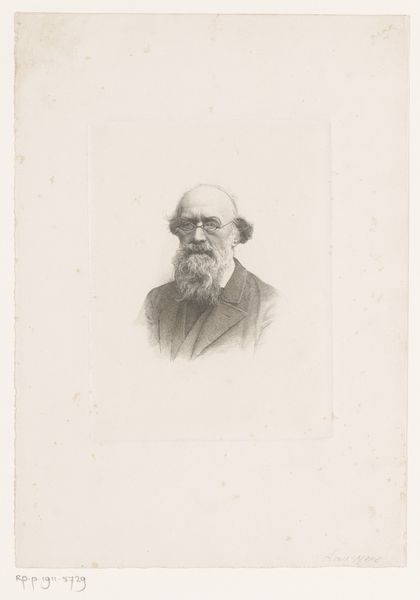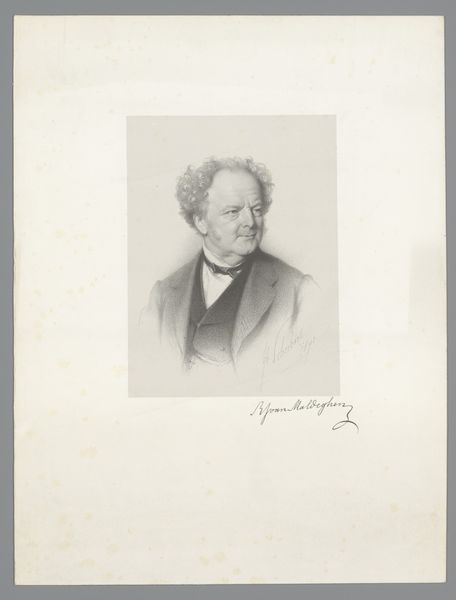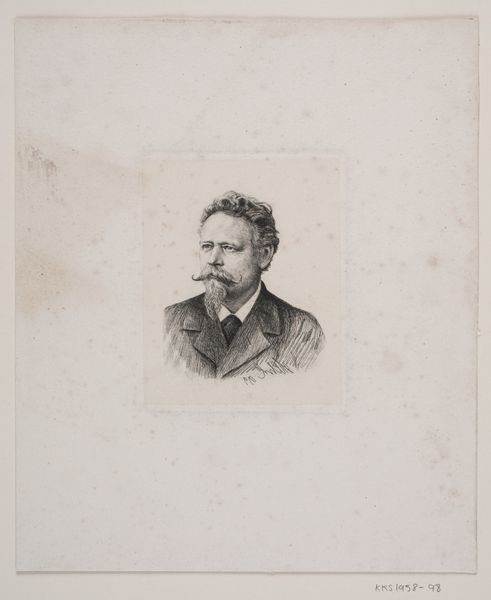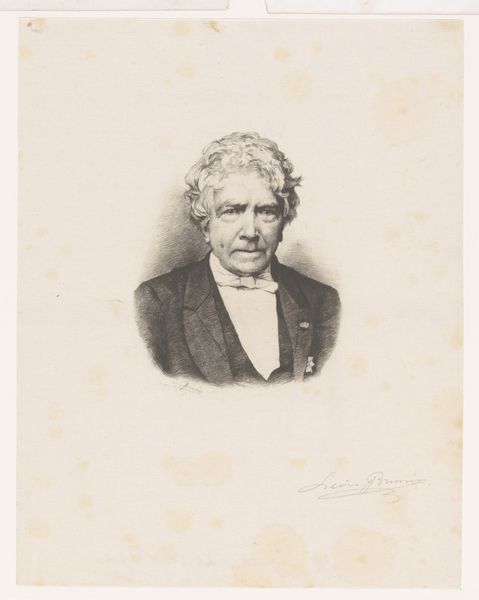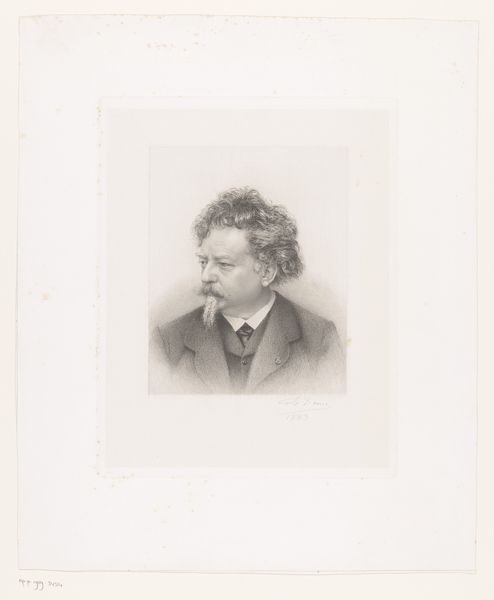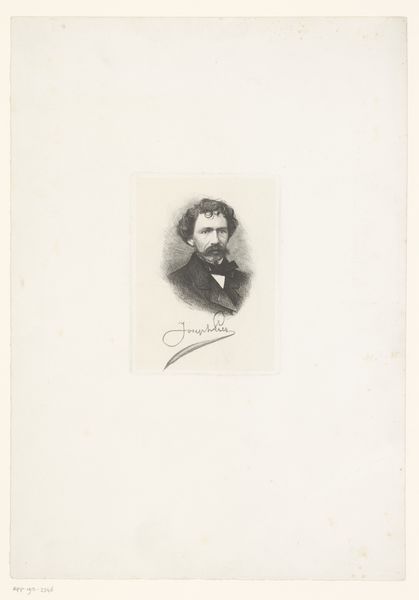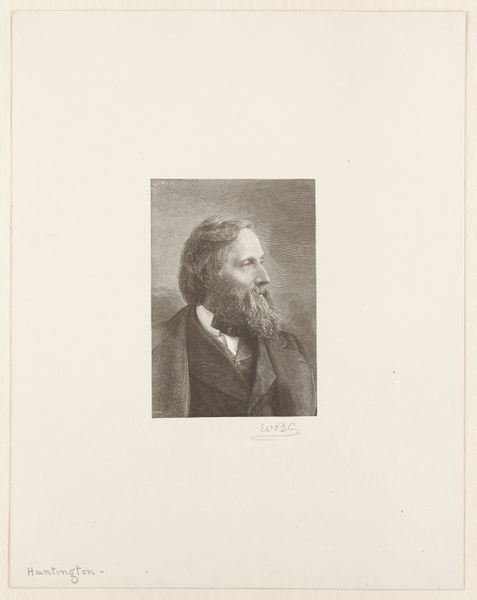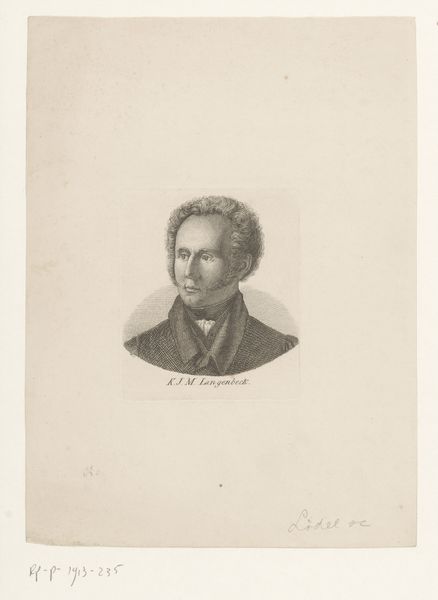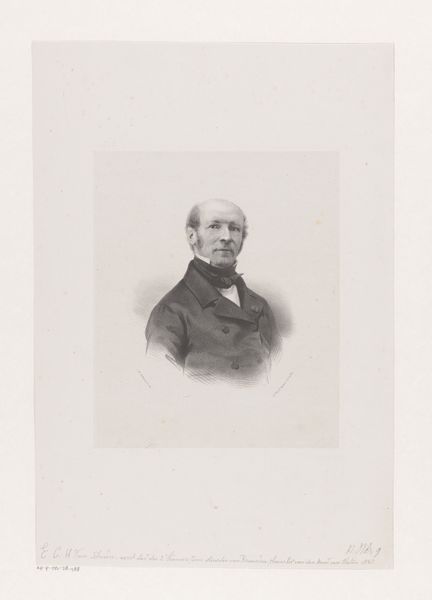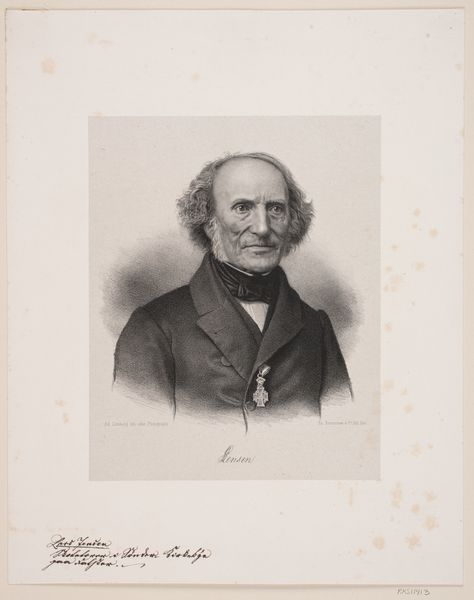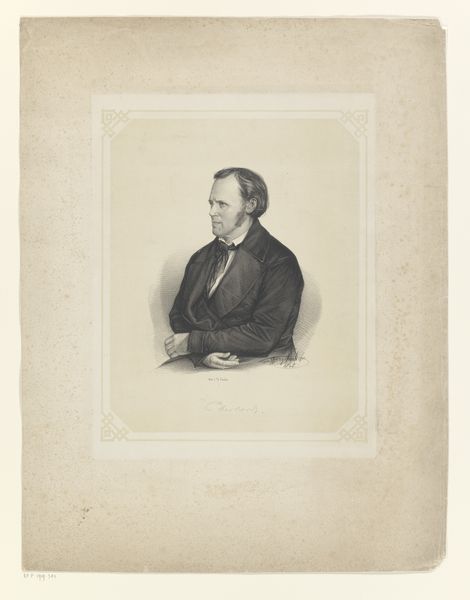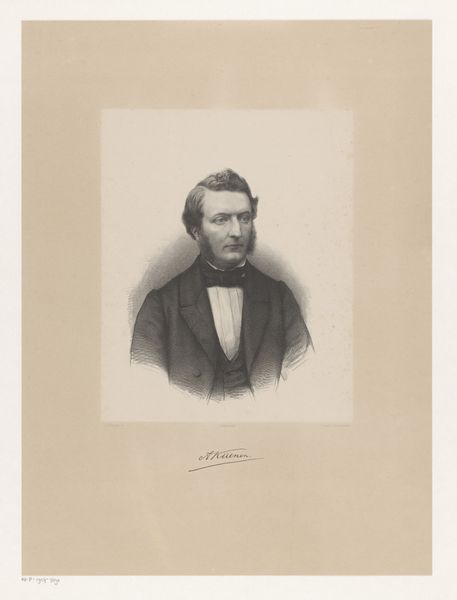
drawing, graphite
#
portrait
#
drawing
#
graphite
#
realism
Dimensions: height 524 mm, width 345 mm
Copyright: Rijks Museum: Open Domain
Editor: This is "Portrait of Jan Antonie van der Ven," made sometime between 1833 and 1863 by Jacob Spoel. It's a graphite drawing, and the realism gives it a very immediate feeling, as if you're really looking at this person. What details jump out at you when you see this portrait? Curator: The most striking element to me is perhaps how the gaze holds a specific gravity. Van der Ven isn't merely looking; the eyes project experience, a life considered. Think of the cultural context – the 19th century’s emphasis on character. How might societal expectations have influenced Spoel’s portrayal? Editor: I guess the seriousness of his expression. Was there something specific about how people were portrayed then? Curator: Absolutely. It was an age where portraiture aimed to capture not just likeness but also the sitter’s moral standing and social position. The precision of the graphite work, the attention to detail, suggests an interest in revealing inner qualities. His neatly styled hair, the carefully knotted tie – what do these signify to you? Editor: Status, respectability, maybe? But it also feels like a performance, something consciously constructed. Curator: Precisely. These visual cues were deliberately employed to communicate specific messages. Do you see any tension between the external presentation and what you perceive to be the internal state? Perhaps that's where we see true insight revealed. Editor: Yes! I didn’t see it that way at first, but now noticing the contrast gives it a lot more depth. Thanks! Curator: It’s a journey of continuous discovery, seeing how each symbol shapes and reshapes our understanding of cultural memory.
Comments
No comments
Be the first to comment and join the conversation on the ultimate creative platform.
